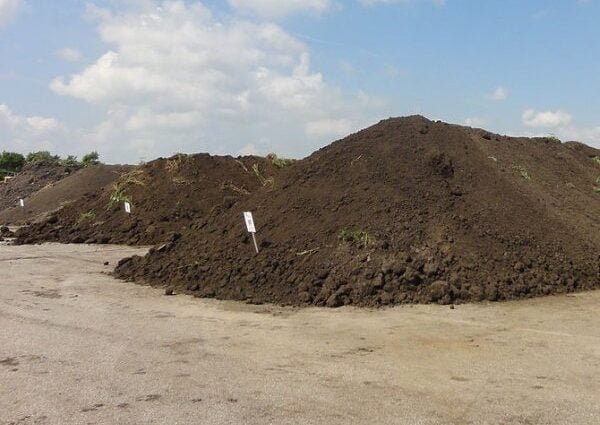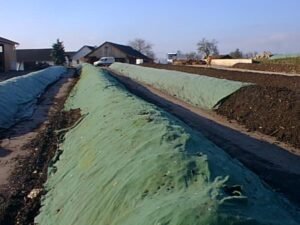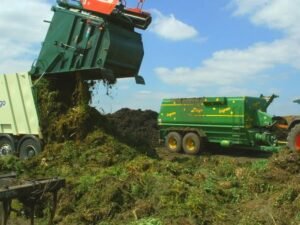Compost Plants- Helpful tips for decision makers
Windrow composting
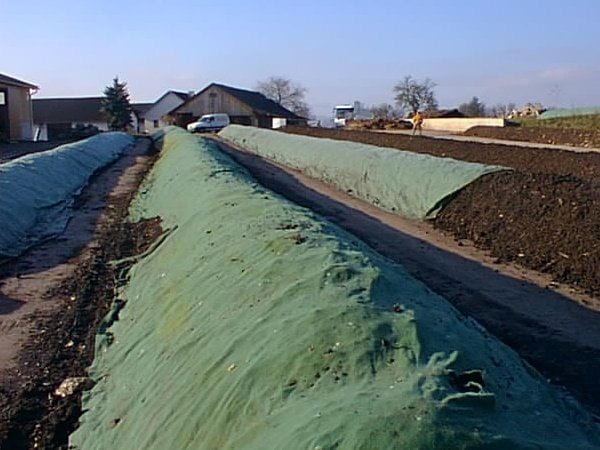
Windrow composting is a method of composting organic matter in long, triangular or trapezoidal heaps that are turned periodically to allow aeration and accelerate decomposition. This method is frequently used for large-scale composting operations, such as on farms or in municipal composting facilities.
At the start of composting in open heaps, biodegradable waste, agricultural residues, manure, etc. are piled up in long rows, typically 2.5 to 5 meters wide and 1.2 to 2.5 meters high. The rows are left for a few days to allow the internal temperature of the stack to rise, typically to around 50 to 70 degrees Celsius. The first “hot” stages of the composting process are important to kill any harmful bacteria or pathogens in the organic material and to speed up the entire process.

During the composting phases, the heaps must be turned over with a special compost turner that loosens and aerates the heap. Turning the pile also helps regulate the internal temperature and moisture content of the compost. The process of moving and controlling the pile takes anywhere from several weeks to several months, depending on the size of the windrow and the type of organic material being composted. Once the compost is fully degraded and stabilized, it can be used as a soil conditioner for agricultural or landscaping purposes, or as a feedstock for organic fertilizers.
Windrow Shape & Equipment Types
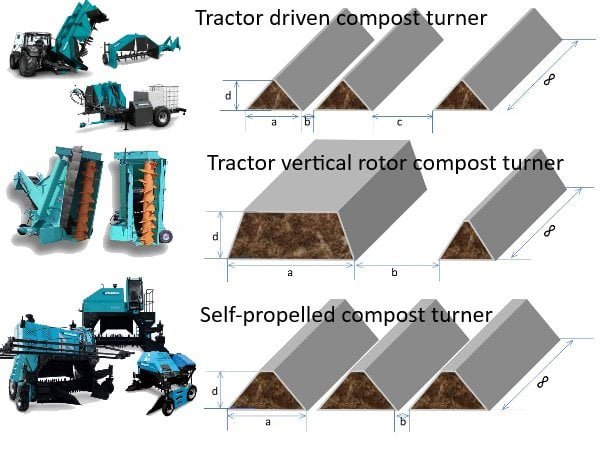
The shape and size of the windrows depends on the type of compost turner, as does the layout of the composting facility.
Input volume, process time and space availability are considerations for choosing the right type of compost turner. The volume of material in process, the process duration as well as the turning frequency and machine running time determine the size and capacity requirements.
Compost Plant Layout Considerations

Horizontal rotor tractor turner
These type of tractor compost turner are PTO driven and trailed or 3 point hitch mounted. In operation the turning unit is placed laterally from the tractor. A drive lane (c) each 2 windrows is needed and enough turning space at both ends of the windrows. Turning capacities are from 500 to 1500 m3/h.

Vertical rotor tractor turner
Space saving heaps of any shape can be laterally turned, aerated, and re-stacked in a parallel new windrow. The side mounted vertical rotor grinds the lateral face of the compost heap up to a height of 3,5 meters and transfer the compost to a new compost heap.
The equipment is Power Take Off (PTO) driven and three-point mounted by agricultural tractors from 130 Hp (96 kW). Turning capacities are from 1000 to 2000 m3/h.

Self-propelled compost turner
Self-Propelled Compost Turner with turning capacities from 600 up to 4000 m3/h are widely used in industrial composting facilities. These units are typically diesel powered, with wheeled or tracked chassis. Windrow dimensions depend on specific machine design, ranging from 2.5 to 5.0 meter with a windrow height from 1.25 m to 2.5 meter.
Related Info….


